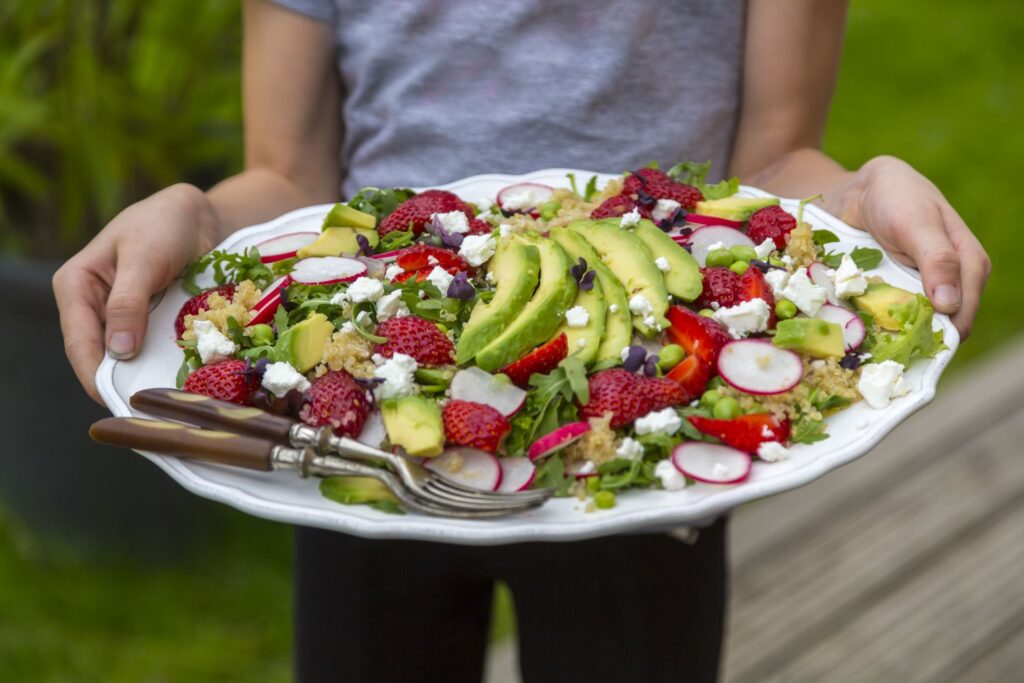According to the conventional idea of weight loss, in order to reduce weight, you must consume a lesser amount of food. However, this is not true thanks to the volumetric diet, a top-rated diet plan which suggests an alternative.
This diet plan has been developed by Barbara Rolls, who is a researcher and a professor at Penn State. Barbara suggests that, in order to reduce weight, you should fill up your stomach with large-volume meals as that will help you in reducing weight.
This concept of eating large-portion meals might not seem very accurate at first, but you will be relieved to know that it is backed up by convincing scientific data and also evidence in the shape of people who have lost weight by following this diet plan. According to data, a volumetric diet plan has been ranked at sixth place among the most popular diet plans in the world because of its exceptional results.

The Volumetric Diet Plan
The focus of a volumetric diet is not on the kind of food you intake but rather on the density of the energy you get from a particular food source. What matters is that you keep a count of the calories you are eating on a daily basis.
Foods which have a high density of energy are usually high in calories, even if consumed in small portions, while foods which have a low density of energy usually deliver fewer calories even when consumed in large quantities.
Also, when a portion of food is low in energy density, it is suitable for consumption at any time of the day when you are following a volumetric diet plan.
Examples of foods which are low in energy density are mostly vegetables as they are high in water content and also low in starch and include mushrooms and tomatoes. All soups which are broth-based also carry a low energy density and hence can be consumed at any time even in large volumes.

However, high energy foods such as lean protein, dairy products with low fat, whole grains, and lentils and beans should only be consumed in moderate amounts, while foods which are high in fat content, such as high-fat milk, cheese, fatty meat, and bread should be consumed in very small quantities.
Under a volumetric diet plan, you are also allowed to consume very small portions of sweets if you have a sweet tooth, but make sure such sugary treats carry very few calories.
Make Your Own Menu
Unlike other diet plans, which restrict you to pre-defined food options for every mealtime, a volumetric diet allows you to enjoy the liberty of designing your own menu. The rule is simple: reduce the portion size of every meal if the food you’re consuming carries a high energy density.
To not compromise on your meal portions, you can find many healthy options which have a low energy density. For example, nearly all salads, stir fry broccoli, or broth soups, to name a few, make for great meals.
For snack-time, you can eat about 200 grams of seedless grapes instead of consuming something unhealthy like two cookies, both of which have the same number of calories but the former has a much higher nutritional value.
Likewise, instead of filling up your stomach with mini pretzels, you can enjoy a large bowl of popcorn or simply eat a large cucumber. If you want to keep your portion size really small, then even 1 large tablespoon of hummus can serve as a healthy and fulfilling snack.

Challenges of Following The Volumetric Diet Plan
One drawback associated with this diet plan is that you have to actively maintain a count of your calories intake, which can cause anxiety or stress. Also, the large-volume consumption may not serve as a substitute for satisfying your taste appetite, which is usually not satisfied with only green, healthy foods.
If you are eating low-calorie foods which are processed, such as crackers or faux sweeteners, then beware that those will likely mess up your health. The best strategy for you is to choose between options that are whole foods, fresh, and also home-cooked.









